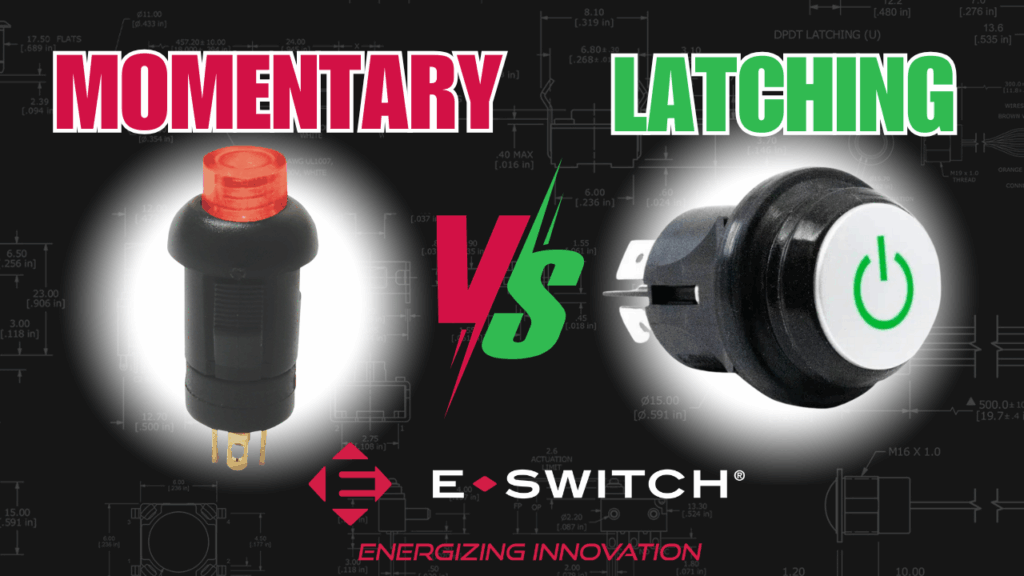Whether you’re designing a new product or simply learning more about electromechanical products, one important question you’ll need to be able to answer is “what’s the difference between a momentary vs latching switch?” The function, behavior and use cases of momentary vs latching switches differs, and you’ll also find momentary vs latching across a variety of switch types — including pushbutton, tactile, anti-vandal, rocker and toggles switches — so knowing the difference is the key to understanding what product will ultimately work best with your design.
Difference Between Momentary vs Latching Switch
Electromechanical switches are used to control the flow of electric current in a circuit. However, the way they go about making and breaking the current depends on the switch’s functionality.
Momentary: In a momentary switch (typically a tact), the circuit is only connected while the button is being actively pressed. As soon as you release the button, the connection is broken. This is also referred to as a “push to make” or normally open (NO) switch (doorbell, keyboard keys, etc.). Alternatively, a momentary switch can be wired as “push to break” or normally closed (NC), meaning when the button is not pressed, electricity can freely flow through the circuit, but when it’s pressed the circuit is broken (fridge light, fail-safe alarms, etc.) and the flow is momentarily disrupted.
Latching: A latching switch (typically a pushbutton) maintains its last state after activation and stays in that position until it’s manually changed again, unlike a momentary switch which returns to its default state when released. This means they can either maintain an open circuit or a closed circuit until manually switched to the other state. The latching function can also be referred to as a “push-on, push-off” function or a “push-to-make, push-to-break” switch.
Tactile switches are typically momentary, meaning the electrical connection is established only while the switch is actively pressed. When you release the button, the connection is broken. Pushbutton switches can be either momentary or latching. Momentary pushbuttons are similar to tact switches in that they are pressed to make and released to break the electrical connection. Latching pushbutton switches, on the other hand, can maintain their state (either open or closed) until manually switched to the other state. The same can be said of other switch types that can be configured as either momentary or latching, including rockers, toggles, key locks and anti-vandals.
Momentary vs Latching Switch Data Sheet Difference
If you’re looking at an E-Switch data sheet, the function stated within parenthesis indicates a momentary function. For example, you can order the PA4 Series pushbutton switch as either momentary or latching. If you’re looking at the single-pole version, the “Off-On” function denotes the latching version while the “Off-(On)” is the momentary function. The same holds true for the two-pole version.
PA4 Series Data Sheet Example:

To select between a momentary and latching switch, you’ll need think about three things:
#1. Do you need the switch to stay on/off after being pressed? If so, you’ll need a latching switch.
#2. Is the action temporary or sustained? If temporary then momentary, if sustained then latching.
#3. Is user feedback or state indication important? If so, you’ll likely need a latching switch (for example, a latching switch can stay illuminated after actuation while turning off after an additional push).


